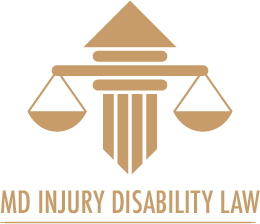In the complex world of litigation, understanding the strategic use of counterclaims, crossclaims, and third-party interpleaders can significantly impact the outcome of a case. These procedural tools, outlined in the Federal Rules of Civil Procedure (FRCP), allow parties to assert their rights, bring in additional parties, and manage the scope of litigation efficiently as a personal injury lawyer can explain:
Counterclaims: The Strategic Assertion Of A Defendant’s Claim(s)
Counterclaims are claims that a defendant makes against the plaintiff in response to the plaintiff’s initial claim. The FRCP distinguishes between two types of counterclaims: compulsory and permissive.
Compulsory counterclaims, governed by FRCP 13(a), must arise from the same transaction or occurrence as the opposing party’s claim. If not brought in the current lawsuit, these claims are forfeited and cannot be pursued in future litigation. This rule encourages efficiency by resolving all related issues in a single lawsuit. However, there are exceptions where a compulsory counterclaim need not be raised, such as when the claim is already the subject of another lawsuit, or when jurisdictional issues prevent the court from hearing the claim.
Permissive counterclaims, on the other hand, are governed by FRCP 13(b) and can be brought by the defendant at their discretion. These claims do not need to be related to the original complaint and can be based on an entirely different set of facts. If a defendant chooses not to assert a permissive counterclaim, they retain the option to file that claim in a separate lawsuit at a later time. Due to the fact that these claims need not arise out of the same transaction or occurrence as the original complaint, the court must have jurisdiction to hear these separate claims. If the claims brought are very different from the original complaint, the court can bifurcate, or split up, the claims.
Crossclaims: Bridging Connections Between Co-Parties
Crossclaims, governed by FRCP 13(g), are claims made by one party against a co-party in the lawsuit, such as one defendant against another defendant. The rule stipulates that the claim must be related to the original action, typically involving the same transaction or occurrence. Crossclaims allow parties on the same side of a lawsuit to address interconnected issues, promoting judicial efficiency. Importantly, failing to bring a crossclaim does not bar any party from litigating the issue in future actions, as crossclaims are permissive.
Joining Additional Parties And Intervention
FRCP 13(h) allows for the addition of parties to counterclaims and crossclaims, providing a pathway to include individuals or entities not originally named in the lawsuit. This can be critical for ensuring that all relevant parties are part of the litigation, potentially simplifying or resolving complex legal disputes in a single lawsuit. Moreover, FRCP 24 permits parties with a vested interest in the litigation to intervene, offering a mechanism for those indirectly affected by a lawsuit to have their voices heard.
Third-Party Interpleaders: Expanding The Litigation Circle
FRCP 14 introduces the concept of third-party interpleaders, enabling a defendant (now a third-party plaintiff) to bring an additional party (third-party defendant) into the lawsuit. This mechanism is typically used when the third-party defendant might be liable to the defendant (third-party plaintiff) for all, or part, of the original plaintiff’s claim. The liability must be derivative, meaning the third-party defendant’s liability is contingent upon the defendant being found liable. This tool is particularly useful in cases involving indemnity or contribution, allowing the defendant to seek reimbursement or a share of the liability from the third-party defendant.
The strategic use of counterclaims, crossclaims, and third-party interpleaders, along with the ability to join additional parties for intervention, reflects the FRCP’s commitment to comprehensive and efficient dispute resolution. By understanding and effectively utilizing these procedural tools, litigants can ensure their claims and defenses are fully represented, potentially influencing the litigation’s outcome.
Thanks to Eglet Adams Eglet Ham and Henriod for their insight on counterclaims, crossclaims, and interpleaders.
If you are facing legal problems, contact a lawyer near you for help.

